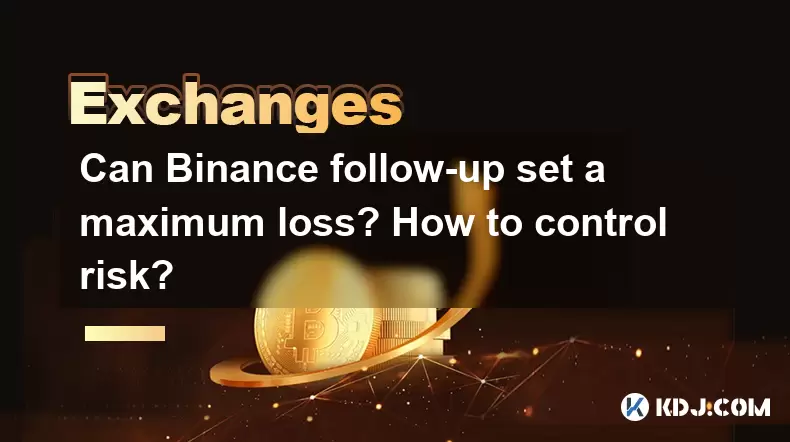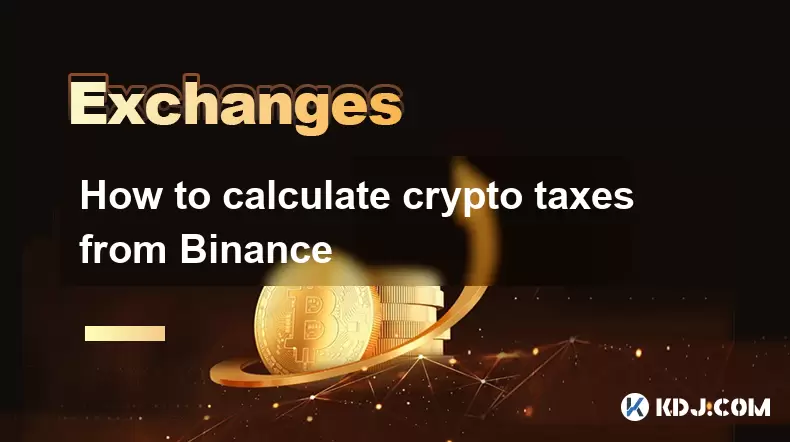-
 Bitcoin
Bitcoin $117500
2.15% -
 Ethereum
Ethereum $3911
6.19% -
 XRP
XRP $3.316
10.79% -
 Tether USDt
Tether USDt $1.000
0.01% -
 BNB
BNB $787.2
2.24% -
 Solana
Solana $175.2
4.15% -
 USDC
USDC $0.9999
0.00% -
 Dogecoin
Dogecoin $0.2225
8.40% -
 TRON
TRON $0.3383
0.28% -
 Cardano
Cardano $0.7868
6.02% -
 Stellar
Stellar $0.4382
9.34% -
 Hyperliquid
Hyperliquid $40.92
7.56% -
 Sui
Sui $3.764
7.63% -
 Chainlink
Chainlink $18.48
10.66% -
 Bitcoin Cash
Bitcoin Cash $582.1
1.88% -
 Hedera
Hedera $0.2601
6.30% -
 Avalanche
Avalanche $23.33
4.94% -
 Ethena USDe
Ethena USDe $1.001
0.02% -
 Litecoin
Litecoin $122.3
2.04% -
 UNUS SED LEO
UNUS SED LEO $8.969
-0.27% -
 Toncoin
Toncoin $3.339
0.86% -
 Shiba Inu
Shiba Inu $0.00001287
4.30% -
 Uniswap
Uniswap $10.43
7.38% -
 Polkadot
Polkadot $3.861
5.08% -
 Dai
Dai $1.000
0.02% -
 Bitget Token
Bitget Token $4.513
3.41% -
 Monero
Monero $267.7
-6.18% -
 Cronos
Cronos $0.1499
4.14% -
 Pepe
Pepe $0.00001110
5.15% -
 Aave
Aave $284.9
8.28%
Can Binance follow-up set a maximum loss? How to control risk?
Binance doesn't offer a direct max loss setting for follow-up trades, but you can use stop-loss, take-profit, and trailing stop orders to manage risk effectively.
May 17, 2025 at 12:01 pm

Can Binance Follow-up Set a Maximum Loss? How to Control Risk?
When trading cryptocurrencies on Binance, managing risk is crucial to protecting your investments. One common question among traders is whether Binance offers a feature to set a maximum loss on follow-up trades. In this article, we will explore this question in detail and provide comprehensive guidance on how to control risk effectively on the Binance platform.
Understanding Follow-up Trades on Binance
Follow-up trades on Binance refer to subsequent trades that a user makes after an initial trade. These can be part of a strategy to manage positions, take profits, or cut losses. However, Binance does not offer a specific feature to set a maximum loss on follow-up trades directly. Instead, traders must use other tools and strategies to manage their risks effectively.
Using Stop-Loss Orders to Control Risk
One of the primary tools for managing risk on Binance is the stop-loss order. A stop-loss order allows you to set a specific price at which your trade will be automatically closed to prevent further losses. Here's how to set up a stop-loss order on Binance:
- Log in to your Binance account and navigate to the trading page for the cryptocurrency pair you are trading.
- Select the trading pair you want to set the stop-loss for.
- Click on the "Stop-Limit" order type in the order form.
- Set the "Stop Price" at the level where you want the stop-loss to trigger.
- Set the "Limit Price" slightly below the stop price to ensure the order is executed.
- Enter the amount of cryptocurrency you want to sell at the stop-loss.
- Click "Sell" to place the stop-loss order.
By using stop-loss orders, you can effectively set a maximum loss on your trades, including follow-up trades, to control risk.
Utilizing Take-Profit Orders
In addition to stop-loss orders, take-profit orders are another tool to manage risk on Binance. A take-profit order allows you to set a target price at which your trade will be automatically closed to lock in profits. Here's how to set up a take-profit order:
- Log in to your Binance account and navigate to the trading page for the cryptocurrency pair you are trading.
- Select the trading pair you want to set the take-profit for.
- Click on the "Limit" order type in the order form.
- Set the "Price" at the level where you want to take profits.
- Enter the amount of cryptocurrency you want to sell at the take-profit level.
- Click "Sell" to place the take-profit order.
By combining stop-loss and take-profit orders, you can create a comprehensive risk management strategy for your trades on Binance.
Implementing Trailing Stop Orders
Another advanced tool for managing risk on Binance is the trailing stop order. A trailing stop order allows you to set a stop-loss that moves with the market price, helping you lock in profits while minimizing losses. Here's how to set up a trailing stop order on Binance:
- Log in to your Binance account and navigate to the trading page for the cryptocurrency pair you are trading.
- Select the trading pair you want to set the trailing stop for.
- Click on the "Trailing Stop" order type in the order form.
- Set the "Activation Price" at the level where you want the trailing stop to start.
- Set the "Callback Rate" as a percentage of the activation price to determine how far the price can fall before the stop-loss triggers.
- Enter the amount of cryptocurrency you want to sell at the trailing stop.
- Click "Sell" to place the trailing stop order.
Trailing stop orders can be particularly useful for follow-up trades, as they allow you to adjust your risk management dynamically based on market movements.
Using Position Sizing to Manage Risk
Position sizing is another crucial aspect of risk management on Binance. It involves determining the amount of capital to allocate to each trade based on your overall risk tolerance and account size. Here are some steps to implement effective position sizing:
- Determine your risk tolerance by assessing how much you are willing to lose on a single trade.
- Calculate the percentage of your total capital that you are willing to risk on each trade.
- Use a position size calculator to determine the amount of cryptocurrency to buy or sell based on your risk tolerance and the entry price of the trade.
- Adjust your position size for follow-up trades based on the performance of your initial trade and your overall risk management strategy.
By carefully managing your position sizes, you can control the maximum loss on your follow-up trades and maintain a balanced risk-reward ratio.
Monitoring and Adjusting Your Risk Management Strategy
Effective risk management on Binance requires ongoing monitoring and adjustments. Here are some tips for keeping your risk management strategy up to date:
- Regularly review your trades to assess the effectiveness of your stop-loss, take-profit, and trailing stop orders.
- Adjust your risk tolerance based on changes in market conditions and your trading performance.
- Stay informed about market news and events that could impact the prices of the cryptocurrencies you are trading.
- Use trading journals to track your trades and analyze your risk management decisions over time.
By continuously monitoring and adjusting your risk management strategy, you can better control the maximum loss on your follow-up trades and improve your overall trading performance on Binance.
Frequently Asked Questions
Q: Can I use stop-loss orders for futures trading on Binance?
A: Yes, you can use stop-loss orders for futures trading on Binance. The process is similar to setting up stop-loss orders for spot trading, but you will need to navigate to the futures trading section of the platform.
Q: How often should I adjust my stop-loss orders?
A: The frequency of adjusting your stop-loss orders depends on your trading strategy and the volatility of the market. Some traders adjust their stop-loss orders daily, while others may do so weekly or based on specific market events.
Q: Is it possible to automate my risk management strategy on Binance?
A: Yes, you can automate your risk management strategy on Binance using trading bots and APIs. These tools allow you to set up automated stop-loss, take-profit, and trailing stop orders based on predefined rules and conditions.
Q: What is the difference between a stop-loss order and a trailing stop order?
A: A stop-loss order is set at a fixed price, while a trailing stop order moves with the market price. A stop-loss order will trigger when the price reaches the set level, whereas a trailing stop order will only trigger if the price falls by a specified percentage from its highest point after the order is activated.
Disclaimer:info@kdj.com
The information provided is not trading advice. kdj.com does not assume any responsibility for any investments made based on the information provided in this article. Cryptocurrencies are highly volatile and it is highly recommended that you invest with caution after thorough research!
If you believe that the content used on this website infringes your copyright, please contact us immediately (info@kdj.com) and we will delete it promptly.
- Stablecoins, Hong Kong, and On-Chain Finance: Navigating the Regulatory Maze
- 2025-08-08 12:30:12
- Tron's Sell-Off Spurs Altcoin Shift: What's Next for TRX?
- 2025-08-08 08:30:12
- Euler, DeFi, and Coinbase: A New York Minute on the Latest Buzz
- 2025-08-08 12:30:12
- RUVI Presale: Is the Growth Potential Real?
- 2025-08-08 09:10:12
- Sleep Token's US Takeover: Thornhill Rides the 'Even In Arcadia' Wave
- 2025-08-08 08:30:12
- FTT Token's Wild Ride: Creditor Repayments vs. Market Drop - A New Yorker's Take
- 2025-08-08 07:10:12
Related knowledge

How to use margin trading on Poloniex
Aug 08,2025 at 09:50am
Understanding Margin Trading on Poloniex

How to use advanced trading on Gemini
Aug 08,2025 at 04:07am
Understanding Advanced Trading on GeminiAdvanced trading on Gemini refers to a suite of tools and order types designed for experienced traders who wan...

How to deposit USD on Bitstamp
Aug 07,2025 at 05:18pm
Understanding Bitstamp and USD DepositsBitstamp is one of the longest-standing cryptocurrency exchanges in the industry, offering users the ability to...

How to use the Kraken Pro interface
Aug 08,2025 at 09:57am
Understanding the Kraken Pro Interface LayoutThe Kraken Pro interface is designed for both novice and experienced traders seeking a streamlined experi...

How to find my transaction ID on Gemini
Aug 08,2025 at 12:50am
Understanding the Transaction ID in Cryptocurrency ExchangesA transaction ID (TXID) is a unique alphanumeric string that identifies a specific transfe...

How to calculate crypto taxes from Binance
Aug 08,2025 at 07:56am
Understanding Cryptocurrency Taxation on BinanceCalculating crypto taxes from Binance requires a clear understanding of how tax authorities classify d...

How to use margin trading on Poloniex
Aug 08,2025 at 09:50am
Understanding Margin Trading on Poloniex

How to use advanced trading on Gemini
Aug 08,2025 at 04:07am
Understanding Advanced Trading on GeminiAdvanced trading on Gemini refers to a suite of tools and order types designed for experienced traders who wan...

How to deposit USD on Bitstamp
Aug 07,2025 at 05:18pm
Understanding Bitstamp and USD DepositsBitstamp is one of the longest-standing cryptocurrency exchanges in the industry, offering users the ability to...

How to use the Kraken Pro interface
Aug 08,2025 at 09:57am
Understanding the Kraken Pro Interface LayoutThe Kraken Pro interface is designed for both novice and experienced traders seeking a streamlined experi...

How to find my transaction ID on Gemini
Aug 08,2025 at 12:50am
Understanding the Transaction ID in Cryptocurrency ExchangesA transaction ID (TXID) is a unique alphanumeric string that identifies a specific transfe...

How to calculate crypto taxes from Binance
Aug 08,2025 at 07:56am
Understanding Cryptocurrency Taxation on BinanceCalculating crypto taxes from Binance requires a clear understanding of how tax authorities classify d...
See all articles

























































































